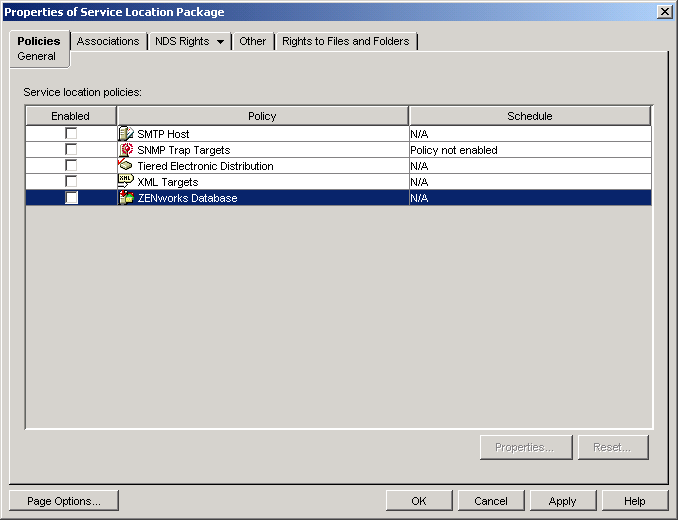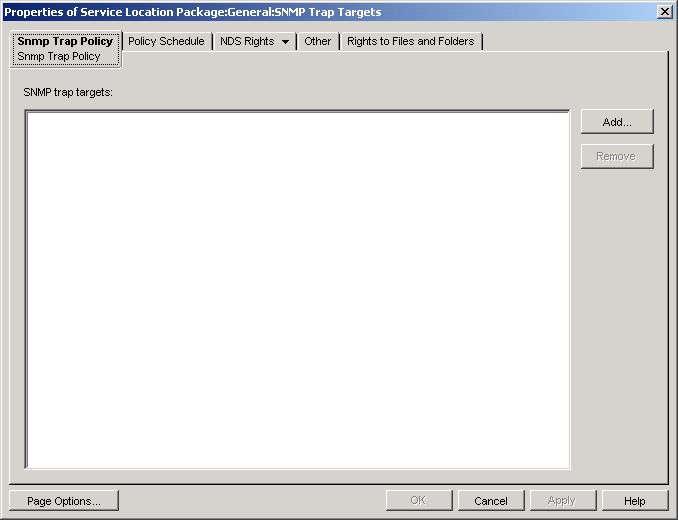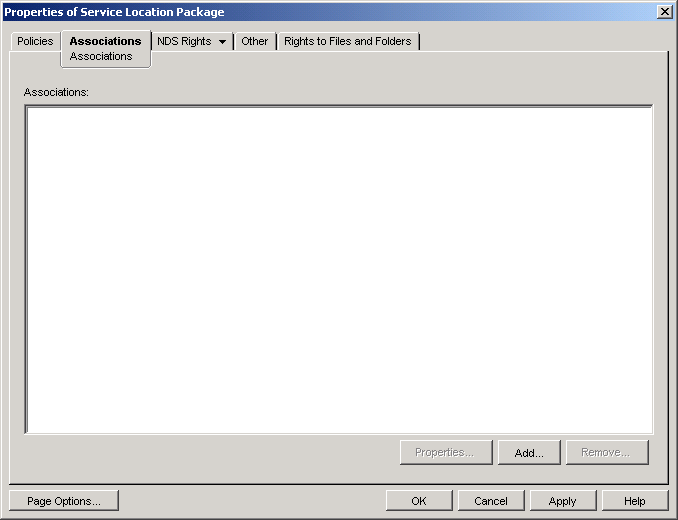Setting Up SNMP Trap Reporting
If you have a management console to collect SNMP traps, you can have Application Launcher send SNMP traps to the management console.
To set up SNMP trap reporting, you need to complete the following tasks:
Enabling the SNMP Trap Targets Policy
Before Application Management can use SNMP traps for event reporting, you need to:
- In ConsoleOne, activate an SNMP Trap Targets policy in a Service Location Package. The SNMP Trap Targets policy simply points to the IP address (or addresses) of the management console that will display the traps. A Service Location Package can have only one SNMP Trap Targets policy. If you haven't created a Service Location Package, or if your current packages' SNMP Trap Targets policies are being used for other databases, you need to create a new Service Location Package. Instructions are provided in the steps below.
- Associate the Service Location Package with the containers where the users or workstations reside that you want the SNMP Trap Targets policy applied to. This association is how Application Launcher knows which SNMP trap target to use when reporting events for the users or workstations.
To activate an SNMP Trap Targets policy and associate it with containers:
-
In ConsoleOne, right-click the Service Location Package you want to use, then click Properties.
or
If you do not have a Service Location Package, right-click the container where you want to create one, click New, then click Policy Package. Follow the instructions provided in the Policy Package Wizard to create a Service Location Package.

-
On the General page, check the box in the Enabled column to enable the SNMP Trap Targets Policy.
-
Select the policy in the list, then click Properties to display the SNMP Trap Targets list.

-
Click Add to display the SNMP Target dialog box, specify the IP address of the workstation or server where the management console is running, then click OK to add the IP address to the list.
-
Repeat Step 4 to add additional targets.
-
When you've finished adding targets, click OK to return to the General page.
-
Click Associations to display the Associations page.

You use this page to associate the Service Location Package with the containers where the users or workstations reside that you want the SNMP Trap Targets policy applied to. If a parent container includes several containers where User and Workstation objects reside, you can select the parent container rather than each individual container.
-
Click Add, browse for and select the container you want to add, then click OK to add it to the list.
-
Repeat Step 8 to add additional containers.
-
When you've finished adding containers, click OK to save the information.
Configuring Application Objects to Use SNMP Trap Reporting
After you've enabled the SNMP Trap Targets policy and have your management console running, you can start configuring Application objects to use SNMP trap reporting. Because event reporting is configured on a per-application basis, you can choose which applications you want to collect event reports for and which ones you don't.
For detailed instructions about configuring an application to use SNMP trap reporting, database reporting, or log file reporting, see Configuring Applications to Use Reporting.